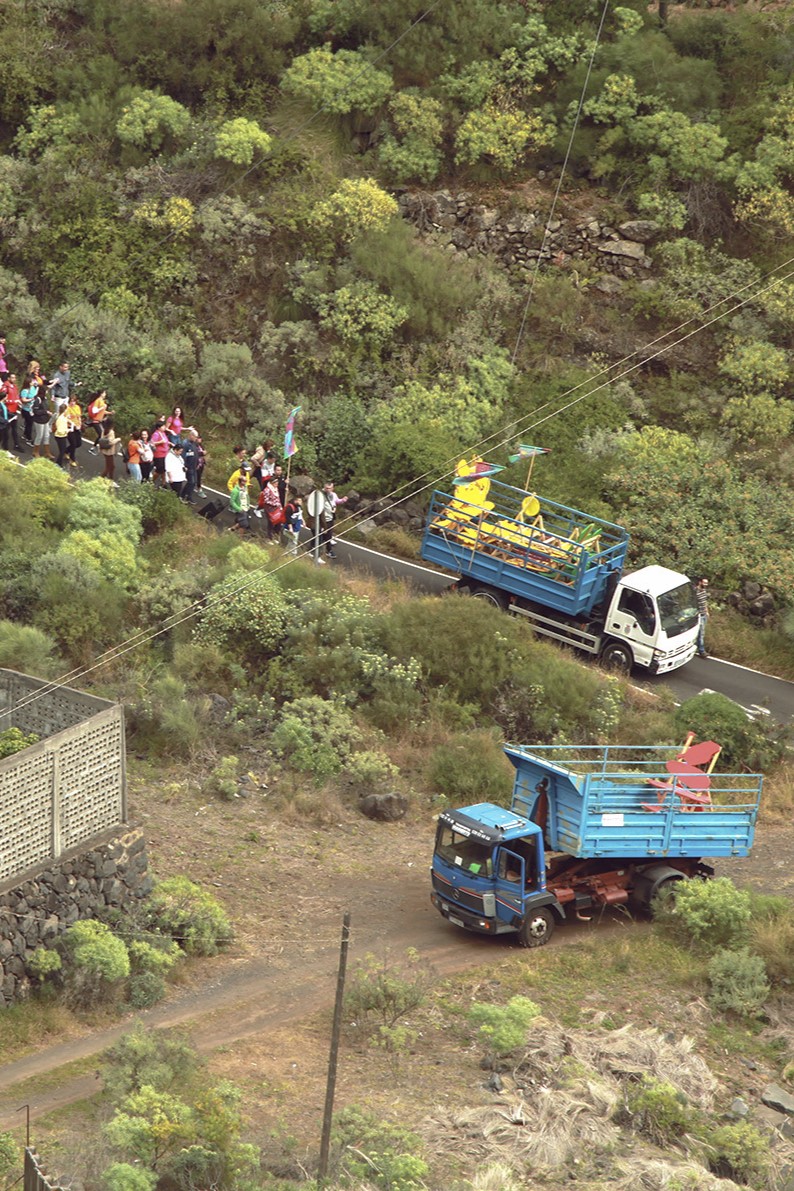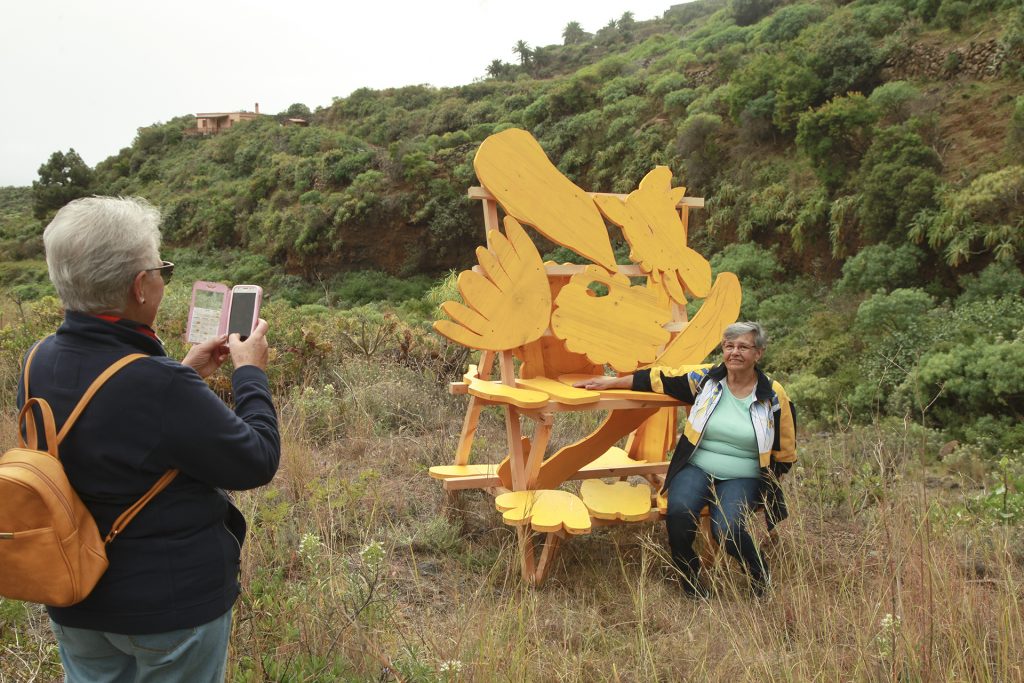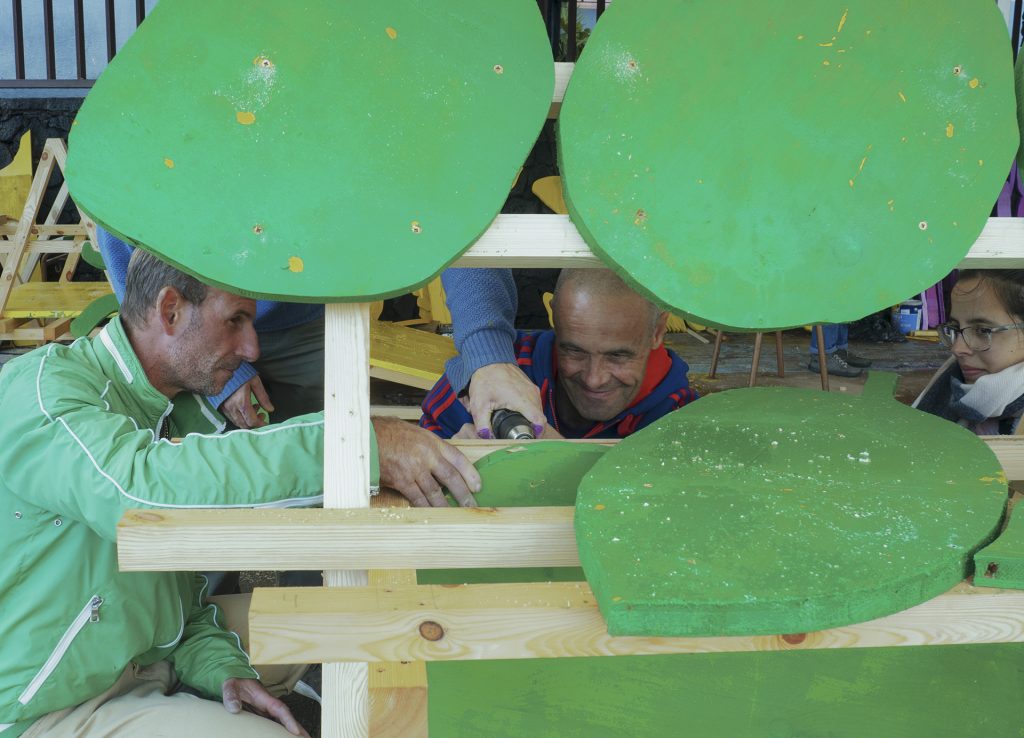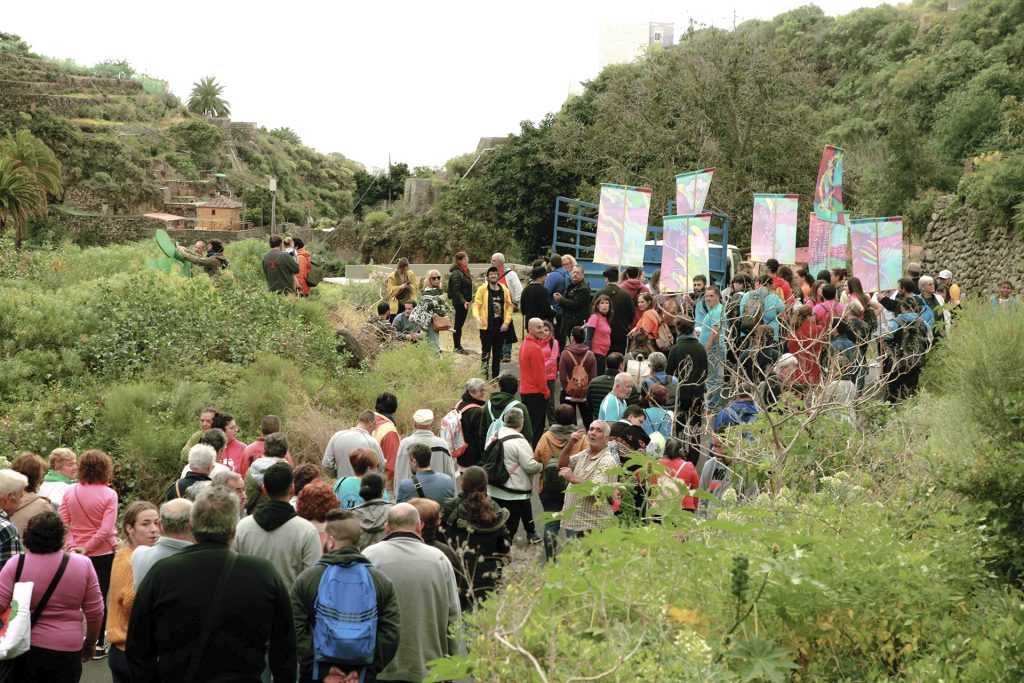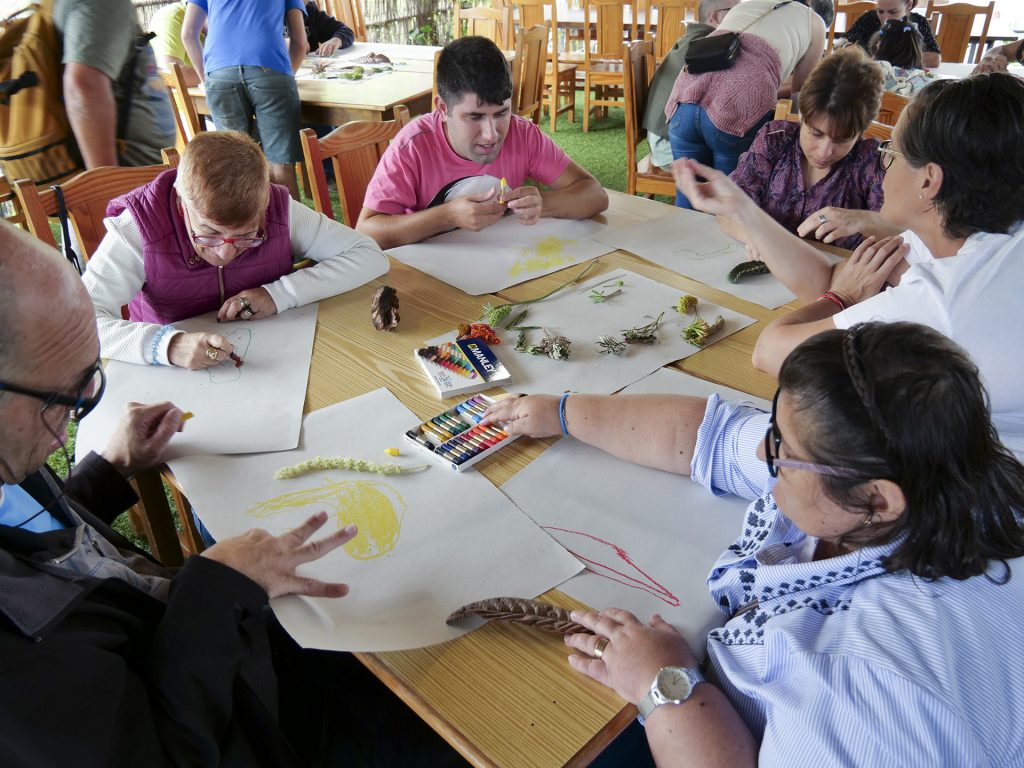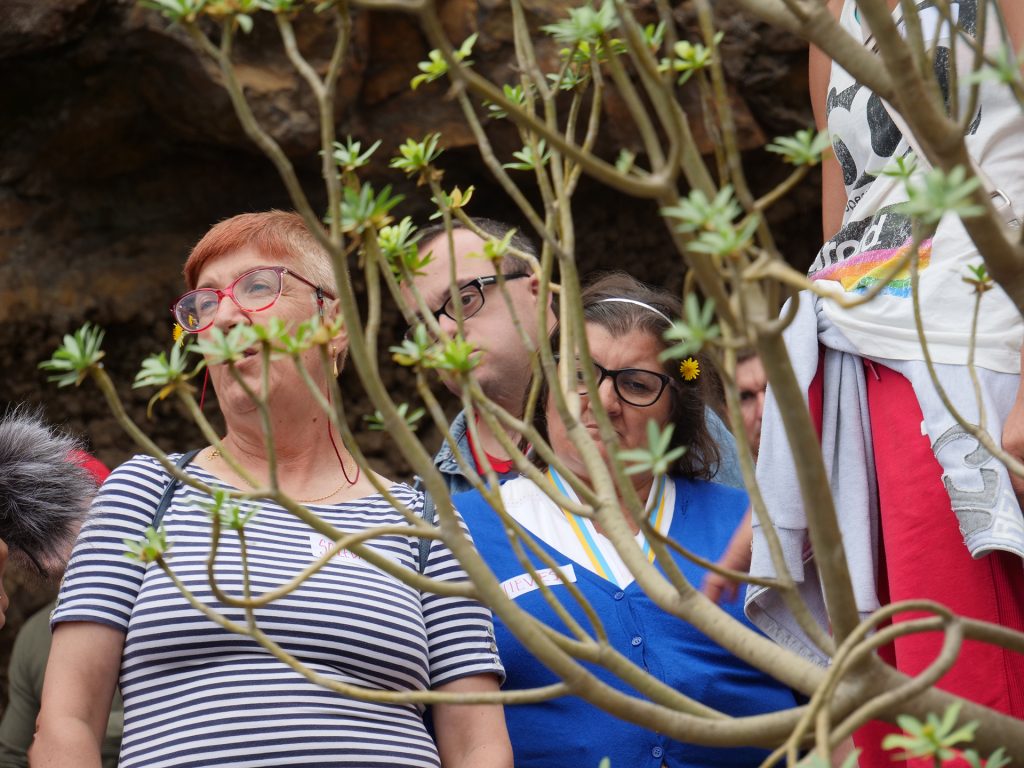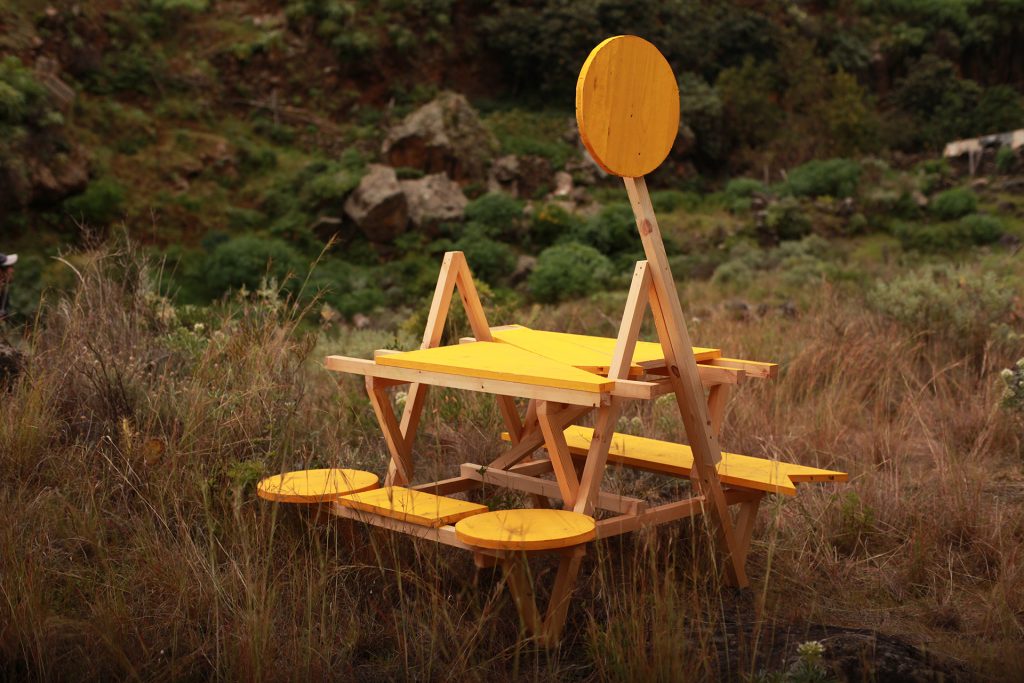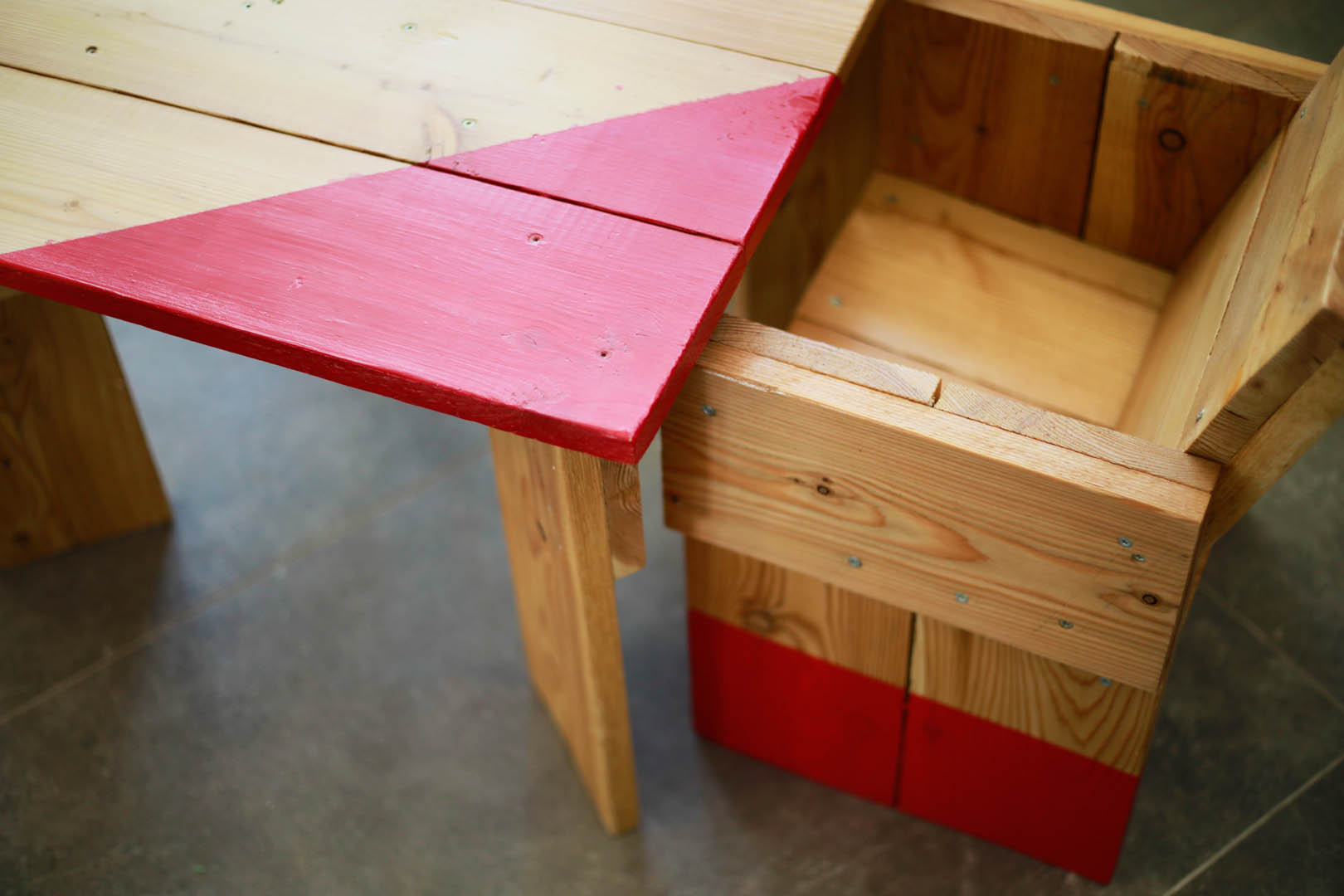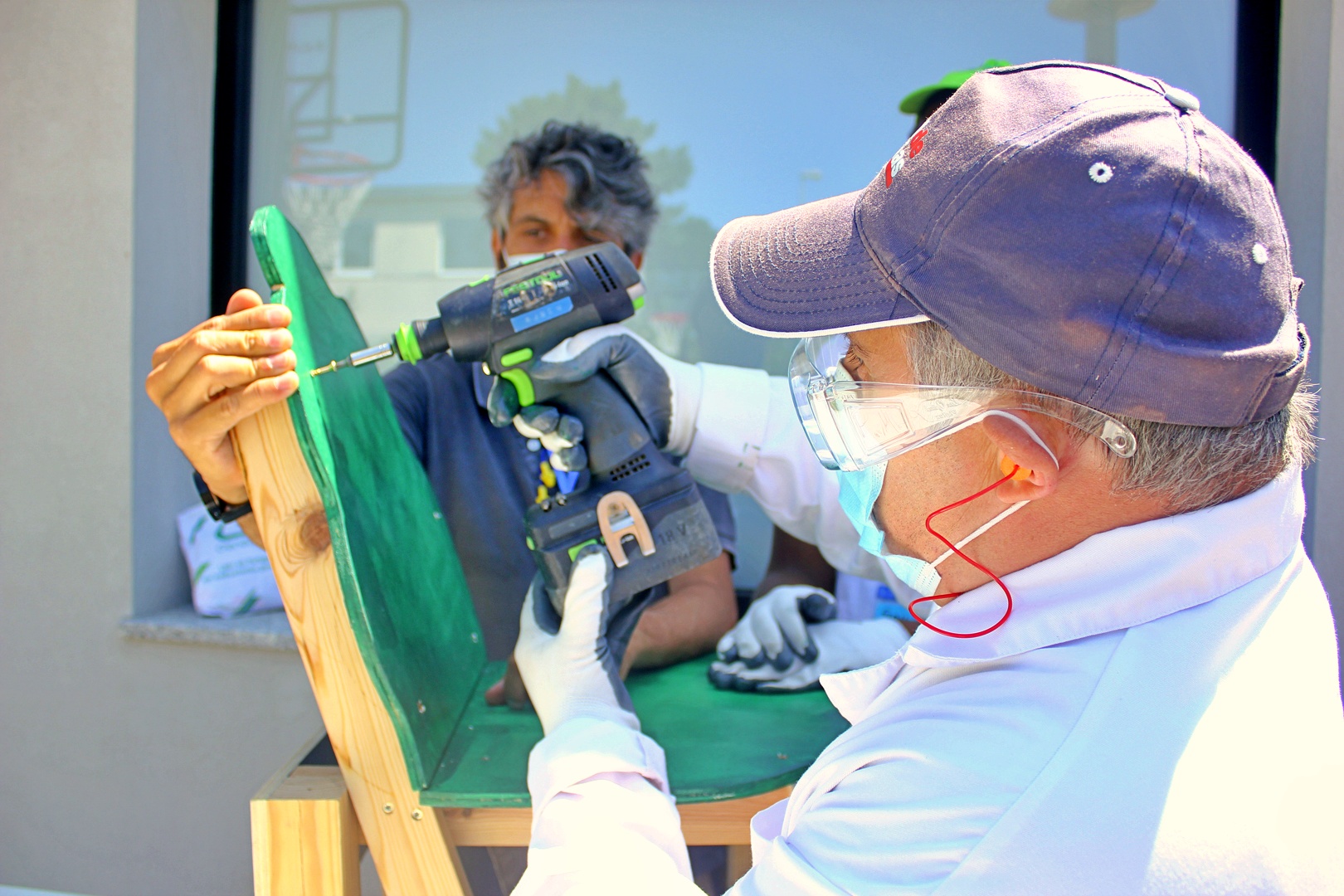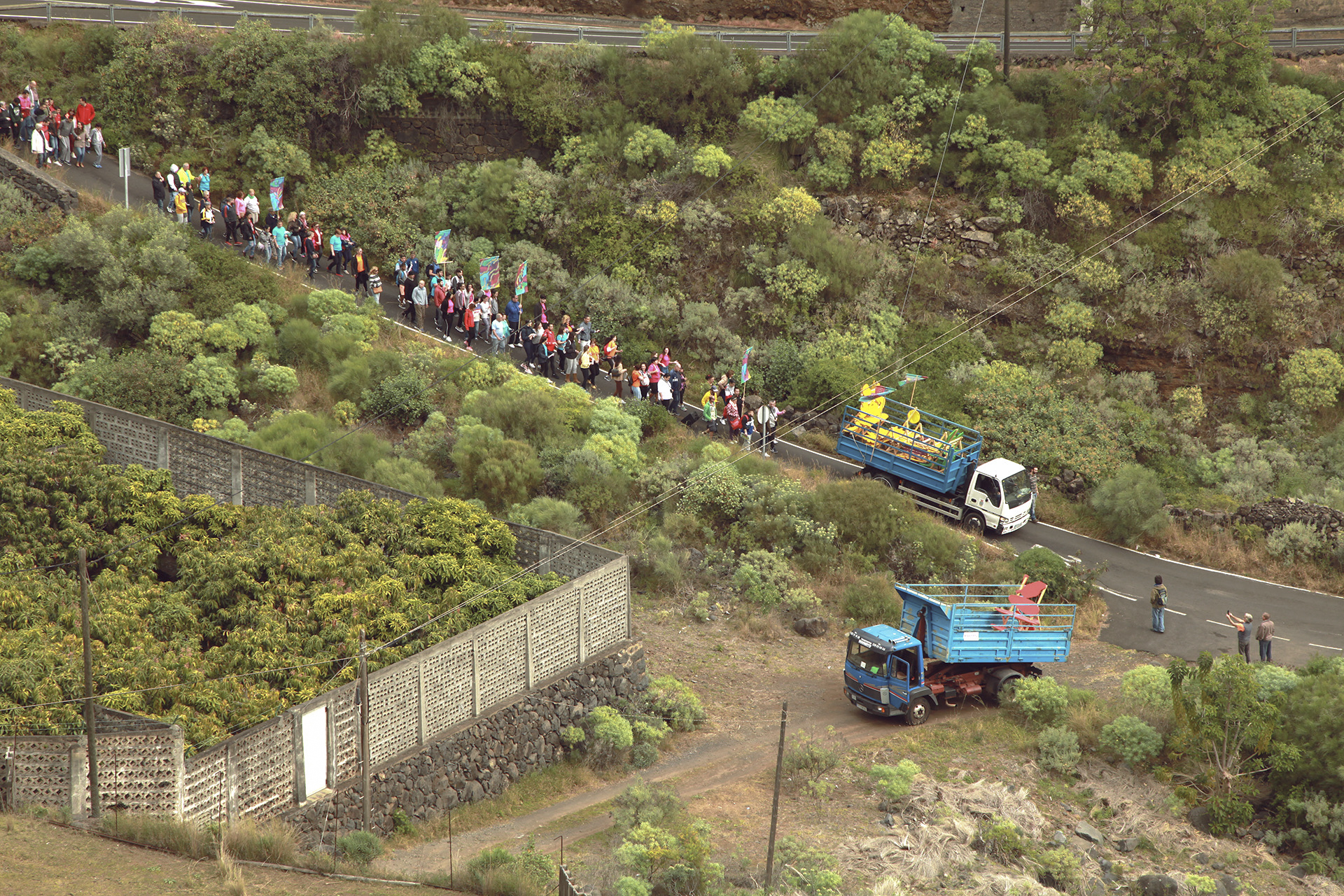
Un proyecto para la visibilidad de la discapacidad en entornos rurales por medio de las prácticas artísticas y el urbanismo.
Aquí hay dragones (“Hic sunt dracones”) es lo que decían en el medievo cuando desconocían aquello que había más allá del territorio explorado. En los mapas se dibujaban serpientes marinas y otras criaturas mitológicas en esas zonas desconocidas.
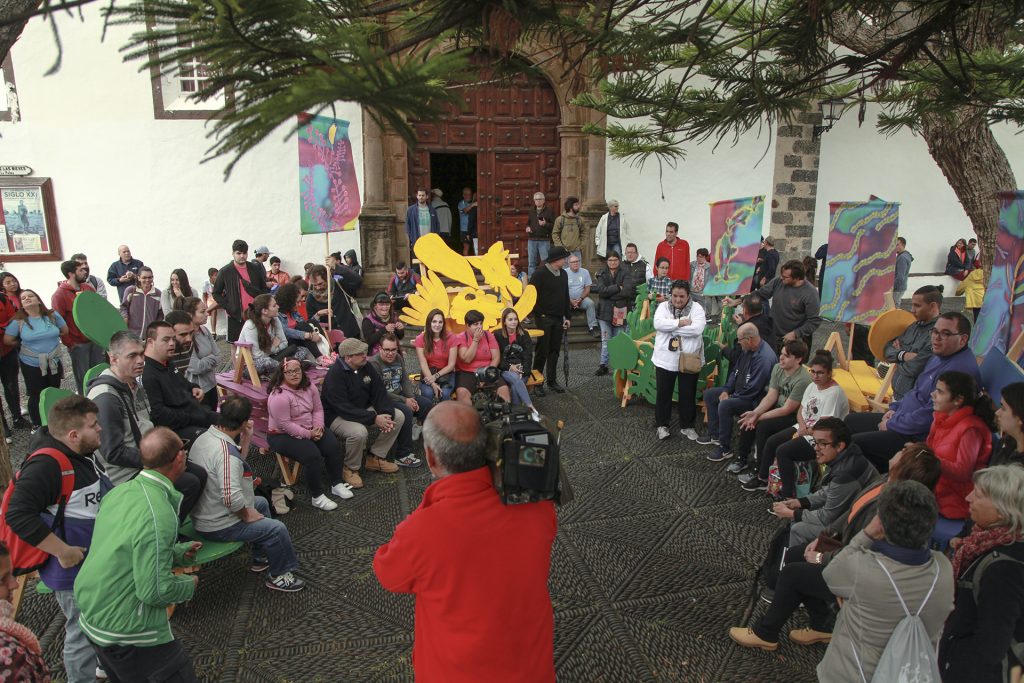
Aquí hay dragones es un proyecto que trabaja con personas con discapacidad y artistas, tanto locales como ajenos a los contextos periféricos, y que busca visibilizar, empoderar y favorecer la autonomía, capacidades e igualdad de una comunidad que, especialmente en las periferias y zonas rurales, suele ser menos visible y partícipe de la vida del común.
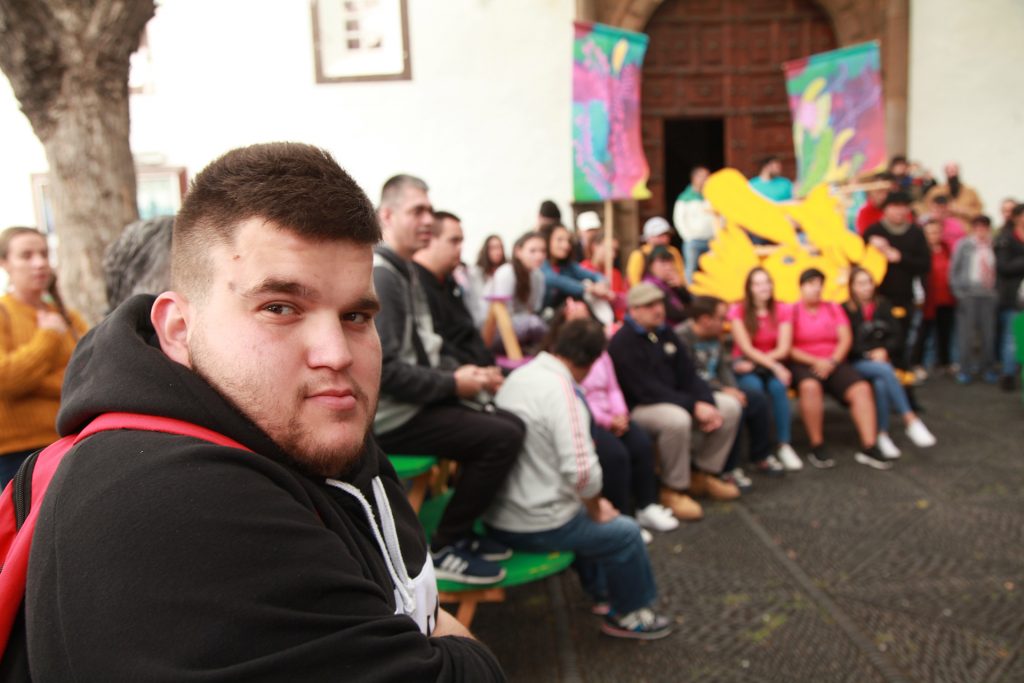
Este proyecto explora un arte y urbanismo inclusivos, utilizando las prácticas artísticas y creativas para visibilizar y ubicar en el centro de los contextos y las políticas sociales a las personas con discapacidad, además de poner en valor el trabajo e implicación de los entornos sociales más cercanos a estos colectivos, fundamentales en su desarrollo individual.
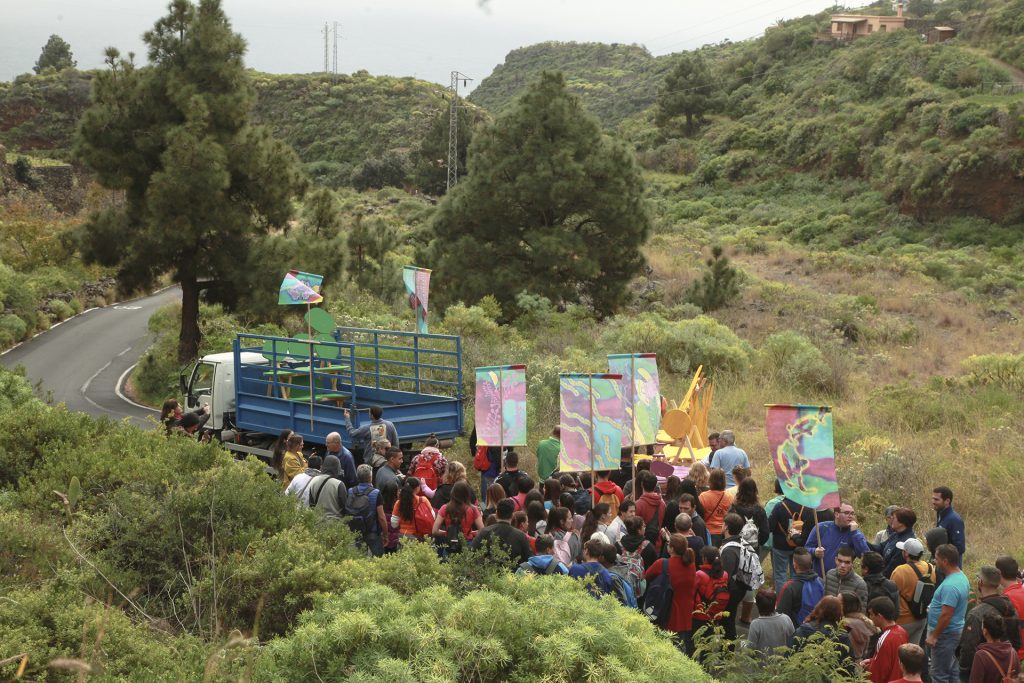
Iniciamos este proyecto con la seguridad de que, en el caso del mundo de la discapacidad, el arte favorece la creación de hábitos de trabajo, despierta la observación y produce cambios en las personas, desarrollando la autoestima. En definitiva, creyendo que las prácticas artísticas son una herramienta que ayudan a descubrir las capacidades de cualquier persona.
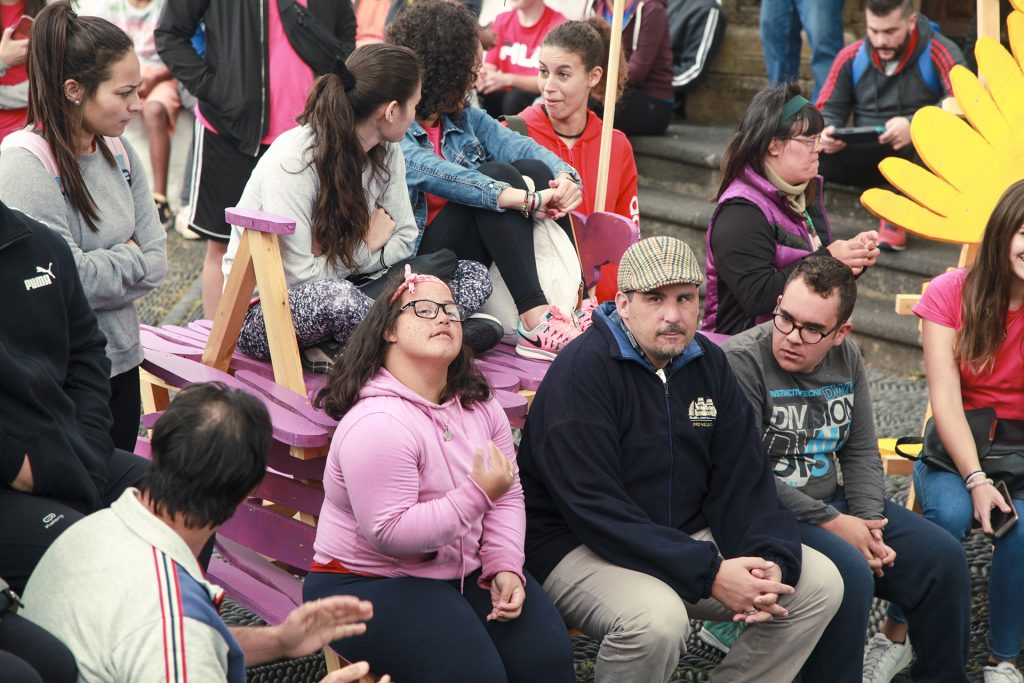
La primera edición se desarrolló en el otoño de 2019 en Santa Cruz de La Palma, en los barrios periféricos de La Dehesa, Las Nieves y Velhoco, junto con las artistas Clara Moreno y la palmera Raisa Maudit. En esta primera incursión contamos con la colaboración de Plena Inclusión Canarias y de las distintas asociaciones y centros ocupacionales, cuyos integrantes viven y conocen la historia y el contexto del entorno de dichos barrios. También trabajamos con la asociación de vecinos, trabajadores municipales, botánicos e incluso con el párroco del Real Santuario de Nuestra Señora de las Nieves. De esta forma promovemos las interconexiones entre distintos colectivos con el objetivo de construir una red que relate otros modos de vivir los espacios públicos que habitamos.
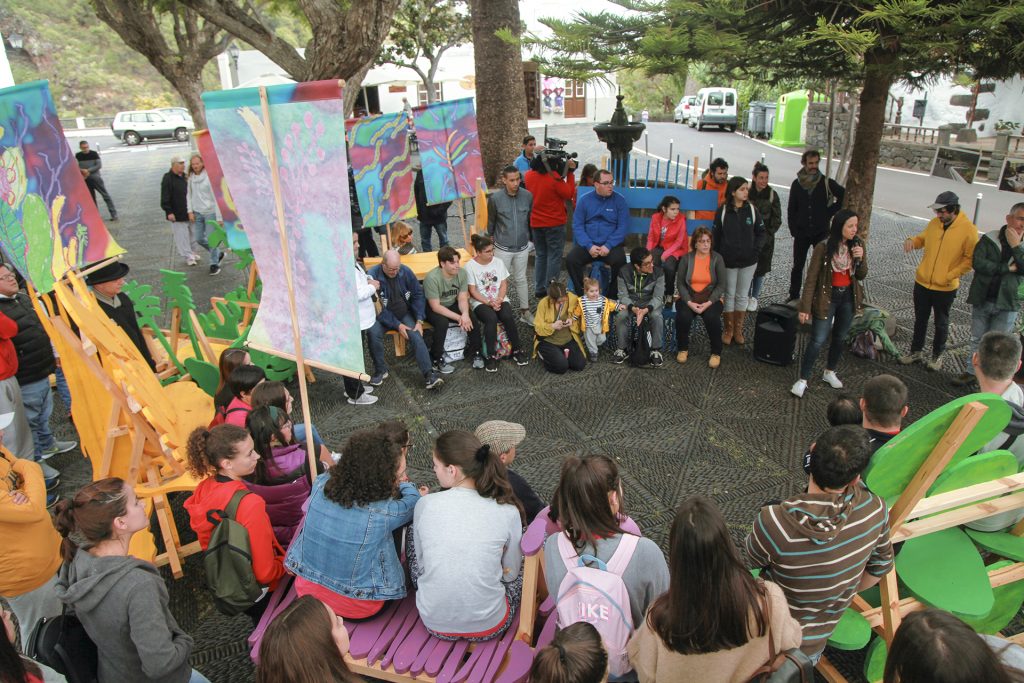
En los distintos talleres compartimos experiencias y aprendizajes por medio de paseos, talleres de urbanismo, diseño y construcción, dibujo, música y performance, poniendo de relevancia el medio, la flora, la memoria y el patrimonio de un lugar tan emblemático como es el entorno del Real Santuario de las Nieves y el Barranco de las Nieves. El proyecto culminó con una “romería” por el barranco, un recorrido en el que se activaron distintos puntos del camino, instalando una serie de muebles diseñados y construidos por los participantes, artistas y Zuloark, inspirados en el propio entorno natural.
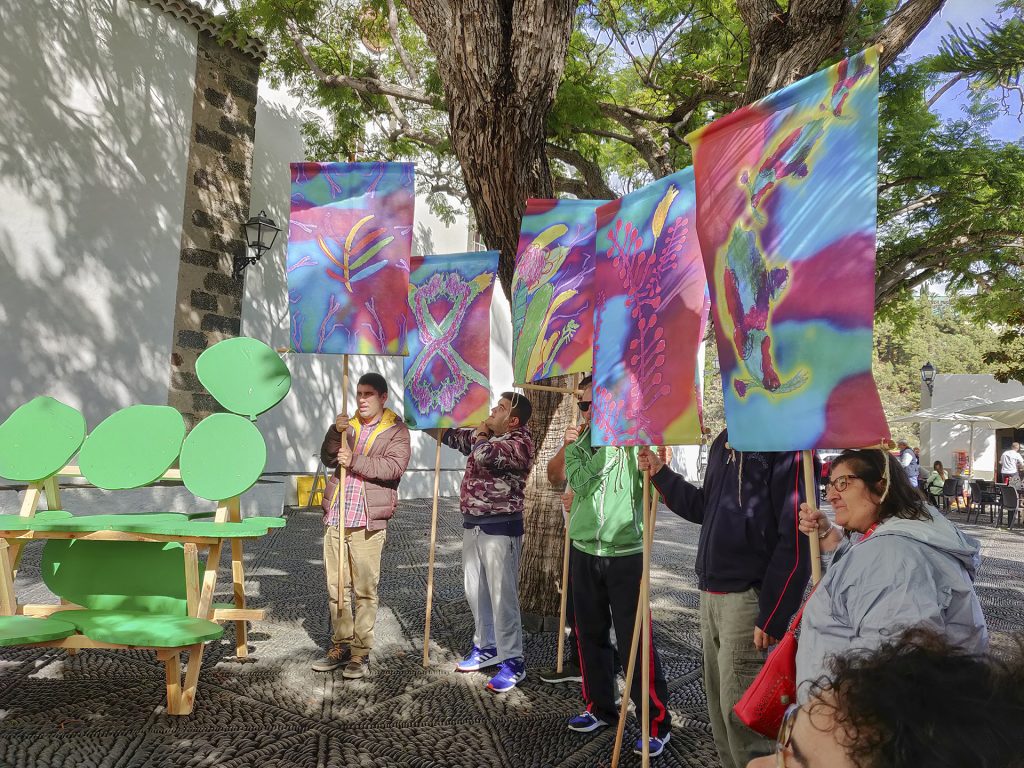
Con la instalación de este mobiliario y el trabajo previo de recolección de plantas, dibujo, relatoría de historias y músicas, gustos, intereses y memoria propia, fomentando la apropiación y resignificación del espacio público, se pone en valor no solo el entorno natural y patrimonial, sino también se visibiliza y se favorece la integración de las personas con discapacidad intelectual o del desarrollo por medio de las prácticas artísticas en el contexto de la periferia de la capital palmera. La invitación a participar en la “romería inversa” para compartir y apoyar a todos los interesados fue abierta no sólo a las familias, sino a todas aquellas personas que quieren repensar y hacer algo por la mejora de nuestro entorno aprendiendo, colaborando juntos y construyendo red.

